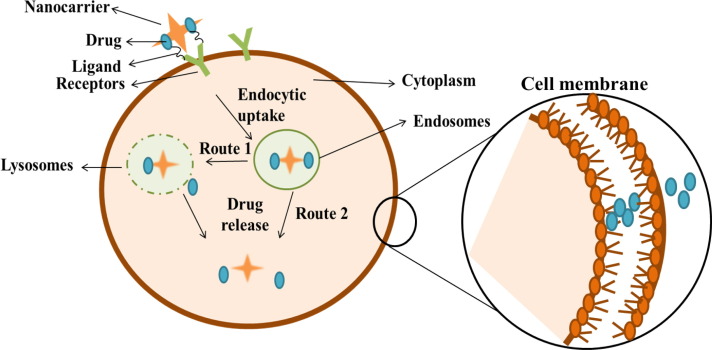Nano-based drug delivery systems have revolutionized the field of medicine, offering innovative solutions for administering therapeutic agents with increased precision and efficacy. By leveraging the unique properties of nanoparticles, these systems have opened new avenues for treating a wide range of diseases, from cancer to neurological disorders. This article provides a comprehensive review of the advantages of nanoparticles in drug delivery, exploring how these tiny carriers can enhance drug efficacy, reduce side effects, and improve patient outcomes.
Understanding Nano-based Drug Delivery
Nanoparticles are minuscule particles, typically ranging from 1 to 100 nanometers in size. Their small size and high surface area-to-volume ratio allow them to interact closely with biological systems at the cellular and molecular levels. Nano-based drug delivery systems utilize these properties to transport therapeutic agents directly to targeted sites within the body, offering a level of precision that traditional drug delivery methods cannot match.
Advantages of Nanoparticles in Drug Delivery
The advantages of nanoparticles in drug delivery are numerous and multifaceted, providing significant improvements over conventional drug delivery methods. Here are some of the key benefits:
1. Enhanced Bioavailability
One of the primary advantages of nanoparticles in drug delivery is their ability to enhance drug bioavailability. Bioavailability refers to the proportion of a drug that enters the bloodstream and reaches the target site. Nanoparticles can improve the solubility and stability of poorly soluble drugs, ensuring that a higher concentration of the drug is absorbed and utilized by the body.
2. Targeted Delivery
Targeted drug delivery is perhaps the most significant benefit offered by nanoparticles. By engineering nanoparticles to recognize and bind to specific cells or tissues, drugs can be delivered directly to the site of action. This targeted approach minimizes the impact on healthy tissues and concentrates the therapeutic effect where it is needed most. For instance, in cancer treatment, nanoparticles can deliver chemotherapy drugs directly to tumor cells, reducing damage to surrounding healthy cells and decreasing side effects.
3. Controlled Release
Nanoparticles can be designed to release their payload in a controlled manner over a specified period. This controlled release mechanism ensures a sustained and consistent delivery of the drug, maintaining therapeutic levels in the bloodstream and reducing the frequency of dosing. This particularly benefits chronic conditions, where maintaining steady drug levels can improve treatment efficacy and patient compliance.
4. Reduced Side Effects
By targeting drug delivery to specific cells and tissues, nanoparticles significantly reduce the risk of side effects associated with traditional drug administration. Conventional drug delivery methods often involve systemic distribution, where the drug circulates throughout the body, affecting both diseased and healthy tissues. Nano-based systems, on the other hand, can concentrate the drug’s action on the diseased cells, minimizing unintended interactions with healthy tissues.
5. Improved Stability and Protection
Many therapeutic agents, especially biological molecules like proteins and nucleic acids, are prone to degradation before they reach their target. Nanoparticles can protect these sensitive drugs from degradation by encapsulating them, ensuring they remain stable and active until they reach the desired site. This encapsulation also protects the drugs from harsh conditions in the gastrointestinal tract or the bloodstream, enhancing their effectiveness.
6. Versatility and Multifunctionality
Nanoparticles are highly versatile and can be engineered to perform multiple functions simultaneously. For example, nanoparticles can be designed to deliver drugs while also serving as imaging agents, allowing for the simultaneous treatment and monitoring of diseases. This multifunctionality is particularly advantageous in oncology, where nanoparticles can help visualize tumors and deliver therapy concurrently.
7. Non-invasive and Patient-friendly
Nano-based drug delivery systems can be designed for non-invasive administration routes, such as oral, nasal, or transdermal delivery. These methods are more patient-friendly compared to invasive procedures like injections, improving patient compliance and comfort. For example, nanoparticles can be incorporated into nasal sprays or skin patches, offering painless and convenient drug administration.
Applications in Various Medical Fields
The advantages of nanoparticles in drug delivery extend across various medical fields, each benefiting from the unique capabilities of nano-based systems.
1. Cancer Therapy
The use of nanoparticles in cancer therapy has been one of the most studied and promising applications. Traditional chemotherapy involves systemic administration of cytotoxic drugs, leading to significant side effects. Nano-based drug delivery systems can target chemotherapy drugs specifically to tumor cells, enhancing their efficacy and reducing toxicity. Additionally, nanoparticles can be used to deliver multiple drugs simultaneously, addressing the challenge of drug resistance in cancer cells.
2. Neurological Disorders
Treating neurological disorders poses a unique challenge due to the blood-brain barrier, a selective barrier that prevents most drugs from entering the brain. Nanoparticles can cross this barrier, delivering therapeutic agents directly to the brain. This capability opens new possibilities for treating conditions like Alzheimer’s disease, Parkinson’s disease, and brain tumors.
3. Infectious Diseases
Nanoparticles can enhance the delivery of antibiotics and antiviral drugs, improving their effectiveness against resistant strains of bacteria and viruses. By targeting these drugs directly to the site of infection, nanoparticles can increase drug concentration at the infection site while minimizing systemic exposure and reducing side effects.
4. Cardiovascular Diseases
Nano-based drug delivery systems can be used to treat cardiovascular diseases by delivering drugs that dissolve blood clots or reduce plaque formation directly to the affected areas. This targeted approach can improve the efficacy of treatment and reduce the risk of adverse effects associated with systemic drug administration.
5. Gene Therapy
Nanoparticles offer a promising platform for gene therapy, where genetic material is delivered to specific cells to correct genetic disorders. Nanoparticles can protect the genetic material from degradation and facilitate its entry into the target cells, increasing the success rate of gene therapy treatments.
Future Perspectives and Challenges
Despite the numerous advantages of nanoparticles in drug delivery, several challenges remain. The long-term safety and biocompatibility of nanoparticles need thorough investigation, as their small size and novel properties could pose unforeseen risks. Additionally, large-scale manufacturing of nanoparticles with consistent quality and functionality presents significant technical and regulatory challenges.
Research is ongoing to address these challenges and further optimize nano-based drug delivery systems. Advances in nanotechnology, materials science, and biomedical engineering will likely lead to the development of even more sophisticated and effective nanoparticle-based therapies. The integration of artificial intelligence and machine learning in the design and optimization of nanoparticles also holds great promise for the future of personalized medicine.
Conclusion
Nano-based drug delivery systems represent a transformative advancement in the field of medicine, offering numerous advantages over traditional drug delivery methods. The ability to enhance bioavailability, provide targeted and controlled drug release, reduce side effects, and improve patient compliance underscores the significant potential of nanoparticles in improving therapeutic outcomes.
For more detailed information on the advantages of nanoparticles in drug delivery, you can explore [advantages of nanoparticles in drug delivery](https://www.powerofparticles.com/non-invasive-needle-free-delivery-nanomedicines).
As research and technology continue to advance, the role of nanoparticles in drug delivery is expected to grow, paving the way for more effective, safer, and patient-friendly therapies. The future of medicine is increasingly nano, promising a new era of precision and personalization in healthcare.


